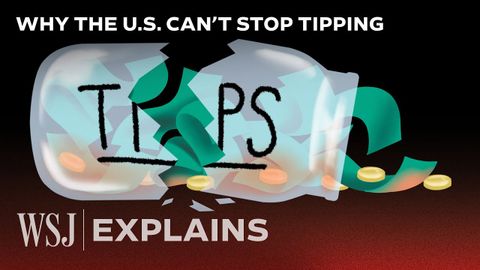買一張椅子也要小費?!美國小費文化大失控,究竟怎麼了?(How Tipping Culture Took Over the U.S. | WSJ)
 沒有此條件下的單字
沒有此條件下的單字US /ˈkɑɡnɪtɪv/
・
UK /ˈkɒgnətɪv/
- adj.認知的;認知能力的;認知發展的;認知療法的
US /məˈdʒɔrɪti, -ˈdʒɑr-/
・
UK /mə'dʒɒrətɪ/
- n. (c./u.)大多數 ; 過半數 ; 大半;成年;多數黨;多數票
US /əˈpriʃiˌet/
・
UK /ə'pri:ʃɪeɪt/
